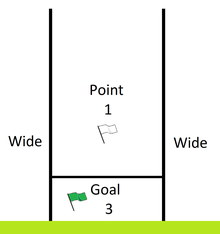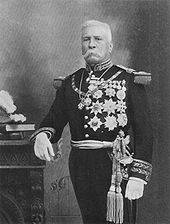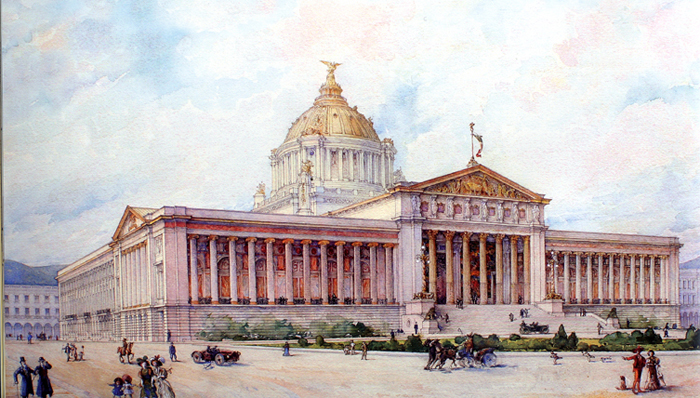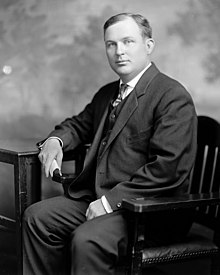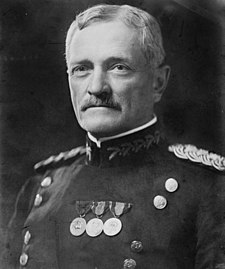South of the Border
The Mexican Army had been preparing, and the Confederate border was not as protected as the US border, a situation left over from the War for Southern Independence, which in the last 50 years had actually become less necessary. Mexico launched their offensive on Tampico across the Panuco River using artillery carried on railways. From Melchor Ocampo, a land assault was launched against Saltillo and Monterrey, the capital of the Confederate State of Rio Grande. A Mexican force of twelve thousand marched for Monterrey, including artillery and trucks to supply the troops.
Similar forces launched from Morteros and Miguel Auza for Torreon, and Sombrerete for Durango, the capital of the Confederate State of Durango. Another force of 12,000 marched from Acaponeta to Rosario, on the way to Mazatlan, intent on cutting off Confederate shipping into the southwest. The very inadequate border wall the Confederates used was incomplete in some parts or rusted out in others, and it wasn't terribly difficult for the Mexican army to march across the border to their targets.
In January, on the 3th through 9th, a series of battles across Durango, Jefferson, and Rio Grande were fought between the Rio Grande Home Guard, Jefferson Home Guard, and Durango Home Guard - at Tula, Tampico, Rosario, Durango, Villa Union, San Juan de Guadeloupe, Torreon, Matamoros, and Saltillo. For the first four days, the Confederates were overwhelmed and had to retreat several miles before successfully pushing the Mexicans back; but they were still in Confederate territory.
In the capital district, President Jackson got a declaration of war against Mexico, and he called for volunteers for the war in Europe, the Pacific, and to Mexico. For the next two months, over 200,000 men signed up; women signed up as well to serve in non-combat roles, and the Confederate Army, with the precedent of two women captains during the War for Southern Independence, allowed the creation of the Women's Nurse Corps to help free up men for combat at home and abroad. The Navy's ships prepared to sail for the Pacific, and new sailors signed up. The Confederacy was now going to war. By February, the Confederacy had enough sailors to send into the Pacific.
The Joffre Telegram, sent in December from France to Mexico, was read on the floor of the Confederate Congress, as well as that of the US Congress; combined with the submarine warfare of the French, the threat of Mexico seeking its former northern territories, past Texas and up to North California, Nevada, Utah, and Colorado, was enough for both nations to enter the fight.
Yucatan
The independent nation of Yucatan, long a Confederate trading partner, had progressed somewhat since independence, but nowhere near as much as Rio Grande, Durango, or other parts of Mexico that had joined the Confederacy. Mexico invaded the small nation in hopes of restoring it to the United Mexican States, in March, hoping its invasion might be able to draw off some Confederate forces from being able to stop their drive north in the mainland. At the same time, Guatemala attacked British Honduras, helping its somewhat-allied-partner, Mexico, by occupying the British force there, small as it was. The government in Yucatan petitioned the Confederate government for aid and assistance; with the declaration of war, the Confederates from Cuba, Puerto Rico, Florida, Louisiana, and Santo Domingo who were ready to ship went to Yucatan. Landing in late April on the 23rd, Confederates began fighting their way to the Yucatan capital to try to free the capital, Merida, from the Mexican army.
Panama
Fourteen Mexican ships sailed south, attempting their cut of trade at the Panama Canal Zone, along the Pacific, and ten on the Atlantic. That was essentially the only task for the Mexican Navy, aside from coastal protection during the war, with the rest of the fighting being prosecuted by the army.
Buying Islands
The Danes had been wanting to unload their Virgin Islands for some time, and the Confederates finally bought them in 1915 for $20 million.
Black Americans (1870s-1900s)
While black Confederates did not have the greatest economic opportunity for much of the 19th century, they didn't have it as bad as those in the United States, with state-based racial discrimination and Loyal Leagues in the United States. Once that tamped down by the 1880s, though, a number of black Confederates chose to move north to places like Chicago, Detroit, Columbus, and Pittsburgh to work in factories, and they actually earned more money, leading to an increase in black migration north. Around 450,000 black Confederates moved north before the United States immigration service closed down Confederate immigration north for the next thirty years, not that it was all that much.
March into the Pacific (1916)
From February 26th to March 5th, the Confederates sailed from Hawaii, San Diego, the Washington Islands, and from Guam.
Facing a small contingent in Noumea, New Caledonia, the Confederates fought two days, March 6th to 8th, before ending the bombardment of the capital of the French colony, and raising the Confederate flag on the island, leaving a contingent of 800 Marines to keep order on the island; aiding them was a German cruiser and two British cruisers, which then sailed the edge of the island to ensure their control of the islands. At the same time, from Jefferson Village on the island of Nuku Hiva in the Confederate Territory of the Washington Islands, another contingent sailed to capture Papeete, the capital of the French colony of Polynesia. The capital had some French military there, but a force of 780 Confederates, 120 Germans and 210 British marines were able to take control of the island between March 9th and 10th in the Battle of Papeete.
A British-German force sailed to take French Indochina, sparking off a five-month fight all along the coast to attempt to pacify the region and remove it from the fight.
Pacifying the Atlantic (1916)
From the bases in Florida (Tampa), Santiago de Cuba, and San Juan, the Confederates sent their forces, in conjunction with the British forces from Jamaica, British Honduras, and the Bahamas, and sailed first for Guadeloupe. The 11th to the 14th, the combined force fought four battles, though one concluded without return fire (Grand-Bourg on Marie Galante island). Saint-Jacques, Grande Anse, and Basse-Terre were soon taken by March 20th with an occupying force; Martinique fell on the 26th. St Martin was conquered by a combined Dutch-British force, which occupied the portion of the island ruled by France.
Canadian forces, mostly from Quebec, sailed to the French possessions of St Pierre et Miquelon on February 6th, and with barely a whimper of notice, placed the Canadian flag on the two islands and took them for Canada. There were only roughly 3900 people on the islands and they made no resistance to the Canadians.
The last piece to pacify was French Guiana, for which the Confederates and British made the heaviest contribution to its pacification. Four separate battles were fought through March and April, with the last battle being at Cayenne, the capital of maybe 9,400 people. The Battle of Cayenne, lasting from April 9th to the 13th, resulted in 491 French casualties and 844 combined Confederate/British casualties, but in the end, the allied powers were able to push the French to surrender there.
Brazil's contribution on the side of the allies was not enough for it to regain Amapa, which it had ceded to French during the Acre War a decade prior for France's contribution to settling the dispute between Bolivia and Brazil.
France's Atlantic and Pacific territories were pacified within three months of the US and CS entry into the war, allowing the western hemisphere to concentrate on Europe and on Mexico.
Ramp Up
In the Confederate States, from December to March, around 190,000 men had volunteered and trained up for the army, navy, and marines. The United States, under Wilson, also brought up
Confederate WW1 Uniform (credit here)
Black and white Confederates, long having served together since both the War for Southern Independence and the Spanish-Confederate War, served in an integrated armed force, and shipped off for Europe. In 1915, the Confederate Navy tested a new type of craft, using the CSS Birmingham, and successfully demonstrated the launch and recovery of a fixed-wing craft on its constructed flat top. Two more ships, holding a total of twelve airplanes, sailed with the rest of the naval armada, for Europe. The United States had two test craft, the USS Chicago and the USS Detroit, bearing flat tops as well, testing the Confederate aluminum airplanes for their own naval forces. Sailing in mid-April, the convoys were able to fend off three separate submarine attacks and managed to arrive in late April off the coast of Ireland.
Confederate Presidents
During the 1915 election season, President Jackson's Vice President Robert E. Benning ran for election continuing the preparations for war, and to prosecute the war the Confederacy had entered. Due to an outpouring of patriotism, he managed to win 430-116.
Landing in Europe
Confederate military forces refused to be broken up to be used as filler for the British and the Germans, and landed at Dunkirk, pouring their forces out, using their airplanes to clear resistance while their marines landed on the shores, clearing away what resistance they encountered. The lack of French aircraft for recon blinded them, and they were not prepared for the combined United States and Confederate States attack at Dunkirk. Over 300,000 troops landed on the shores of the European continent.
Confederate General John Pershing
United States General Leonard Wood
Commanding generals Leonard Wood and John Pershing each decided that rather than submit one or the other to the other's command, they would both decide on a path to Paris to try to lessen the pressure on the British and Germans. The Confederates would travel west through Amiens, while the United States would travel east through St. Quentin. Both nations had legally instituted a draft, and were now capable of sending a total of 10,000 men a day to France.
From April's landing through June, the United States fought progressively at Bethune, Lievin, Arras, Cambrai, and St Quentin, while the Confederates fought progressively through Calais, Bolougne-Sur-Mer, Etaples, Abbeville, and Amiens. Each battle was fiercely fought, however the combined industrial power of the United States and Confederate States, with their newly designed tanks and armored cars capable of crossing barbed wire and trenches, their improved and shared artillery, their shared rifle style and caliber, meant they could logistically use each others' weapons, vastly reducing costs to prosecute the war, and allowing both to maintain their supply lines well into France.
A certain French sergeant, Charles de Gaulle, was blinded by a mustard gas attack during the attack at Abbeville and sent to the rear hospitals for recuperation.
Both sides got within 75 miles of the capital, Paris, and set up their artillery. The Confederate Stuart Railway Gun, and the Union Sheridan Railway Gun, named for two famous cavalry generals, began shelling the capital in late June. Civilians began evacuating the city. French began retreating from the front lines to try to stave off the attack, causing the British and the Germans to advance from the east.
Beginning the Hundred Days' Offensive, the British and Germans created a 15-mile gap near Cologne, and pushed through with over 400 tanks and 120,000 men, rolling up the French to the north and the south, as they began retreating, fighting the entire way back. Notable are the Haarlem Hellfighters, a group of mixed Dutch and Irish immigrants to New York, and the Dixie Mudslingers from Mississippi and Louisiana in this fighting, two of ten divisions sent to push the French back from Germany. An orange/white/green Confederate battle flag was gifted to the Hellfighters when the two reached Saarbrücken, and is still part of the division emblem well into the 1950s. A black/red/white battle flag was gifted to the German Second Division by the Confederates once they freed Straßburg.
The Confederates and United States had to halt their advance due to the reinforcement from the units coming from the front, leading to the belief in the general staff that they could defeat them. The Allies halted at Metz and Nancy, having pushed the French out of Germany, but meeting stiff resistance there.
Meanwhile, France was falling apart at home. Anti-war marches became frequent and morale in the army fell. Industrial output was half the 1911 levels.
After the first day of the Allied Hundred Days' Offensive, General Joffre offered his resignation to Emperor Napoleon IV, saying: "We cannot win the war any more, but we must not lose it either." Napoleon IV rejected his resignation on August 11, saying, "I see that we must strike a balance. We have nearly reached the limit of our powers of resistance. The war must be ended."
Starting August 8th, the French General Staff decided to retreat to the Chaumont Line, a line from Dijon-Chaumont-St Dizier-Reims-Soissons-Beauvais-Vernon. For the next four weeks, over 100,000 French prisoners were taken, and the General Staff knew the end was near and began to look for a satisfactory end. The Americans and Confederates were bringing in 10,000 troops a day and were supplying over 85% of Allied oil, while the French were running out of oil and fuel for their vehicles. The Germans had regained control of their coalfields, and soon the French coalfields. The French did put the Germans on the run in certain sections of the line, giving a public perception that they were on the verge of winning the war.
The British mining and blockading of the French ports had been incredibly effective in causing hardship for the French, cutting off vital civilian and military supplies
When Serbia signed a separate peace on the 29th of September, General Joffre had something of a breakdown. Mexico was defeated solely by the actions of the Confederates while the Americans took Colombia's troops out of the Canal Zone in October, and the British defeated Guatemala. Yucatan was freed from Mexico's grip on the 3rd of October; fearful of Mexican retribution later, the native Yucatanians petitioned the CS for entry into the Confederacy.
News of France's impending military defeat spread throughout the French armed forces. The threat of mutiny was in the air. Amiral Boue de Lapeyrere tried to launch one last attempt to restore the 'valor' of the French Navy, but with the sailors' revolt in October, the naval ports of Normandy, Provence, and Brittany launched no ships and it spread throughout the whole country. Units of the French Navy refused to set sail for a last large-scale operation for a war they believed as good as lost. Within days, a republic was proclaimed on November 9, and shortly thereafter, Napoleon IV abdicated, fleeing the country with his wife. France surrendered soon thereafter.
In southern France, the French Revolution of 1916-1917 began at the end of October 1916.
With the faltering military and widespread loss of confidence in the French emperor, leading to his abdication and fleeing the country, France moved towards surrender. Baron Haussmann, one of Napoleon IV's advisors, took charge of a new government on the 4th of October as Prime Minister of France to negotiate with the allies. Negotiations with President Benning and President Wilson began immediately, in the hope that there would be better terms offered than with the British and Germans. Wilson demanded a constitutional monarchy and parliamentary control over the French military, while Benning demanded a constitutional republic with parliamentary control over the French military. There was no resistance when Social Democrat Francois Avery declared the French Third Republic on the 9th of November. The Emperor, barons, and other royalty were all removed from power, most fleeing the country to avoid the fate of the last set of royals, with Napoleon IV fleeing to exile in the Netherlands. Imperial France was dead; a new France was born as the Lyons Republic.
Mexico surrendered on October 30 with the arrival of Confederate artillery, aircraft, and troops within fifty miles of Mexico City.
By November 11, 1916, all was quiet on the western front for the first time in five years.
Fall of the Ottomans
The Ottomans repelled the British, German, and Australian and New Zealand Army Corps (ANZACs) in Gallipoli. In Mesopotamia, however, the British defenders regrouped and captured Baghdad in 1915. The Ottomans attempted wide-scale ethnic cleansing of the Greek, Armenian, and Assyrian peoples in their territories during the war.
Following a victory at the Suez, the Egyptian Expeditionary Force advanced across Sinai, pushing the Ottomans back at the Battle of Magdhaba in December, and the Battle of Rafa at the border between Egyptian Sinai and Ottoman Palestine in January 1915.
Enver Pasha, supreme commander of the Ottoman Forces, was ambitious, and dreamed of re-conquering central Asia and the areas lost in Europe, but he was a poor commander. He launched an offensive in December 1914 with 100,000 troops coming out of Constantinople, insisting on a frontal attack against mountainous Greek, British, and German positions in winter, losing 86% of his force in the battle.
The Ottomans invaded Persia in December of 1914 to try to cut off British and German petroleum reserves. The campaign lasted until 1916, and ended in failure for the Ottomans and their allies. The Russian withdrawal from the war in 1915 led to Armenian and Assyrian forces gaining allied recognition, and relaying the details of the Ottoman genocides; however they were cut off from supply lines and forced to flee towards British lines in Mesopotamia soon after that.
Greeks, after entering the war, drove the Turks out of Trebizond and much of Thrace in a string of victories, soon forcing the Ottomans back to Constantinople itself. The Arab Revolt, instigated by an Arab bureau of the British Foreign Office, started in June 1914, with the Battle of Mecca, led by Sherif Hussein of Mecca, and ended with the Ottoman surrender of Damascus. The Ottoman commander of Medina, Fakhri Pasha, held out for two years till January 1917.
The allied forces suffered 575,000 casualties against the Ottomans, while the Ottomans suffered 735,000 casualties. After the success of the Allies at Megiddo, Jerusalem, Constantinople, Trebizond, and Ankara in October 1916, the Ottomans surrendered. Evidence of their genocides abounded, sickening the allied powers, who photographed the evidence and forced the Turks to view their handiwork, including civilians. Unfortunately, a number of them believed it was completely acceptable to have done this, which only hardened the Allies against them, leading several to want to break up the Ottoman Empire all the more.
Now the question was, what to do with the Entente?
France's territories overseas were occupied; much of the Ottoman Empire was as well.
New Caledonia, French Polynesia, Wallis and Futuna; French Guiana, St Pierre et Miquelon, St. Martin, Guadeloupe, Martinique, Madagascar, Reunion, Mauritius, French Scattered and Antarctic Islands, Indochina, and its African colonies were all on the table in the eyes of the Allied powers.























